2018 年 12 月英语四级真题及答案第一套
Part I Writing (30 minutes)
Directions: For this part, you are allowed 30 minutes to write a short essay on the
challenges of living in a big city. You should write at least 120 words but no more
than 180 words.
Part Ⅱ Listening Comprehension (25 minutes)
Section A
Directions: In this section, you will hear three news reports. At the end of each
news report, you will hear two or three questions. Both the news report and the
questions will be spoken only once. After you hear a question, you must choose the
best answer from the four choices marked A), B), C) and D). Then mark the
corresponding letter on Answer Sheet 1 with a single line through the centre.
Questions 1 and 2 are based on the news report you have just heard.
1.
A) Land a space vehicle on the moon in 2019.
B)
Design a new generation of mobile phones.
C)
Set up a mobile phone network on the moon.
D)
Gather data from the moon with a tiny device.
2. A) It is stable. C) It is inexpensive.
B) It is durable.
D) It is sophisticated.
Questions 3 and 4 are based on the news report you have just heard.
3.
A) It lasted more than six hours
B)
No injuries were yet reported.
C)
Nobody was in the building when it broke out.
D)
It had burned for 45 minutes by the time firefighters arrived.
4.
A) Recruit and train more firefighters.
B)
Pull down the deserted shopping mall.
C)
Turn the shopping mall into an amusement park.
D)
Find money to renovate the local neighborhood.
�
Questions 5 to 7 are based on the news report you have just heard.
5.
A) Shrinking potato farming.
B)
Heavy reliance on import.
C)
Widespread plant disease.
D)
Insufficient potato supply.
6.
A) It intends to keep its traditional diet.
B)
It wants to expand its own farming.
C)
It is afraid of the spread of disease.
D)
It is worried about unfair competition.
7.
A) Global warming.
B)
Ever-rising prices.
C)
Government regulation.
D)
Diminishing investment.
Section B
Directions: In this section, you will hear two long conversations. At the end of
each conversation, you will hear four questions. Both the conversation and the
questions will be spoken only once. After you hear a question, you must choose the
best answer from the four choices marked A), B), C) and D). Then mark the
corresponding letter on Answer Sheet 1 with a single line through the centre.
Questions 8 to 11 are based on the conversation you have just heard.
8. A) Informative.
B) Inspiring.
C) Dull.
D) Shallow.
9. A) She types on a keyboard.
C) She takes photos.
B) She does recording.
D) She takes notes.
10. A) It keeps her mind active.
C) It enables her to think hard.
B) It makes her stay awake. D) It helps her kill time.
11. A) It enables her to improve her pronunciation.
B)
It helps her better remember what she learns.
�
C)
It turns out to be an enjoyable way of learning.
D)
It proves to be far more effective than writing.
Questions 12 to 15 are based on the conversation you have just heard.
12. A) To spend her honeymoon.
C) To take photos of the Taj Mahal.
B) To try authentic Indian food.
D) To trace the origin of a love story.
13. A) In memory of a princess.
B)
In honor of a great emperor.
C)
To mark the death of an emperor of the 1600s.
D)
To celebrate the birth of a princess’s 14th child.
14. A) It looks older than expected.
C) It stores lots of priceless antiques.
B) It is built of wood and bricks.
D) It has walls decorated with jewels.
15. A) Their streets are narrow.
C) Each one has a unique character.
B) They are mostly crowded. D) Life can be tedious in some places.
Section C
Directions: In this section, you will hear three passages. At the end of each passage,
you will hear three or four questions. Both the passage and the questions will be
spoken only once. After you hear a question, you must choose the best answer from
the four choices marked A), B), C) and D). Then mark the corresponding letter on
Answer Sheet 1 with a single line through the centre.
Questions 16 to 18 are based on the passage you have just heard.
16. A) They help spread the latest technology.
B)
They greatly enrich people’s leisure life.
C)
They provide residents with the resources needed.
D)
They allow free access to digital books and videos.
17. A) By helping them find jobs.
C) By keeping them off the streets.
B) By inspiring their creativity.
D) By providing a place of relaxation.
�
18. A) Their interaction with teenagers proved fruitful.
B)
They used libraries less often than teenagers.
C)
They tended to visit libraries regularly.
D)
Their number increased modestly.
Questions 19 to 21 are based on the passage you have just heard.
19. A) It is the cleverest cat in the world.
B)
It is the largest cat in Africa.
C)
It is an unusual cross breed.
D)
It is a large-sized wild cat.
20. A) They are as loyal as dogs.
B)
They have unusually long tails.
C)
They are fond of sleeping in cabinets.
D)
They know how to please their owners.
21. A) They shake their front paws.
B)
They teach them to dive.
C)
They shower with them.
D)
They shout at them.
Questions 22 to 25 are based on the passage you have just heard.
22. A) Anxious and depressed.
C) Excited but somewhat sad.
B) Contented and relieved.
D) Proud but a bit nervous.
23. A) It is becoming parents’ biggest concern.
parents for success.
C)
It
depends
on
their
B) It is gaining increasing public attention.
born.
D) It starts the moment they are
24. A) Set a good example for them to follow.
themselves.
C)
Help
them
to
learn
by
�
B) Read books and magazines to them.
D) Choose the right school for them.
25. A) Their intelligence.
C) The effort they put in learning.
B) Their home life.
D) The quality of their school.
Part Ⅲ Reading Comprehension
(40 minutes)
Section A
Directions: In this section, there is a passage with ten blanks. You are required
to select one word for each blank from a list of choices given in a word bank following
the passage. Read the passage through carefully before making your choices. Each
choice in the bank is identified by a letter. Please mark the corresponding letter
for each item on Answer Sheet 2 with a single line through the centre. You may not
use any of the words in the bank more than once.
Millions die early from air pollution each year. Air pollution costs the global
economy more than $5 trillion annually in welfare costs, with the most serious
occurring in the developing world.The figures include a number of costs
27
with air pollution. Lost income alone amounts to $225 billion a year.
The report includes both indoor and outdoor air pollution. Indoor pollution,
26
29
over
it
28 like home heating and cooking, has remained
which includes
the past several decades despite advances in the area. Levels of outdoor pollution
have grown rapidly along with rapid growth in industry and transportation.
Director of Institute for Health Metrics and Evaluation Chris Murray
30
as an “urgent call to action”. “One of the risk factors for premature deaths is
the air we breathe, over which individuals have little
The
effects of air pollution are worst in the developing world, where in some places
lost-labor income 32 nearly 1% of GDP. Around 9 in 10 people in low- and middle-income
countries live in places where they 33 experience dangerous levels of outdoor air
pollution.But the problem is not limited
world.
Thousands die prematurely in the U. S. as a result of related illnesses. In many
European countries, where diesel (柴油) 35 have become more common in recent years,
that number reaches tens of thousands.
developing
31
,” he
said.
34
to
the
A) ability
I) exclusively
B) associated
C) consciously
D) constant
E) control
F) damage
J) innovated
K) regularly
L) relates
M) sources
N) undermine
Section B
�
Directions: In this section, you are going to read a passage with ten statements
attached to it. Each statement contains information given in one of the paragraphs.
Identify the paragraph from which the information is derived. You may choose a
paragraph more than once. Each paragraph is marked with a letter. Answer the
questions by marking the corresponding letter on Answer Sheet 2.
Food-as-Medicine Movement Is Witnessing Progress
A)
Several times a month, you can find a doctor in the aisles of Ralph’s market
in Huntington Beach, California, wearing a white coat and helping people learn about
food. On one recent day, this doctor was Daniel Nadeau, wandering the cereal aisle
with Allison Scott, giving her some idea on how to feed kids who persistently avoid
anything that is healthy. “Have you thought about trying fresh juices in the
morning?” he asks her. “The frozen oranges and apples are a little cheaper, and
fruits are really good for the brain. Juices are quick and easy to prepare; you can
take the frozen fruit out the night before and have it ready the next morning.”
B)
Scott is delighted to get food advice from a physician who is program director
of the nearby Mary and Dick Allen Diabetes Center, part of the St. Joseph Hoag Health
alliance. The center’s “Shop with Your Doc” program sends doctors to the grocery
store to meet with any patients who sign up for the service, plus any other shoppers
who happen to be around with questions.
Nadeau notices the pre-made macaroni (通心粉) -and-cheese boxes in Scott’s
C)
shopping cart and
suggests she switch to whole grain macaroni and real cheese. “So I’d have to make
it?” she asks, her enthusiasm fading at the thought of how long that might take,
just to have her kids reject it. “I’m not sure they’d eat it. They just won’t
eat it.”
D) Nadeau says sugar and processed foods are big contributors to the rising diabetes
rates among children. “In America, over 50 percent of our food is processed food,”
Nadeau tells her. “And only 5 percent of our food is plant-based food. I think we
should try to reverse that.” Scott agrees to try more fruit juices for the kids
and to make real macaroni and cheese. Score one point for the doctor, zero for
diabetes.
Nadeau is part of a small revolution developing across California. The
E)
food-as-medicine movement has been around for decades, but it’s making progress
as physicians and medical institutions make food a formal part of treatment, rather
than relying solely on medications (药物). By prescribing
nutritional changes or launching programs such as “Shop with Your Doc”, they are
trying to prevent, limit or even reverse disease by changing what patients eat.
“There’s no question people can take things a long way toward reversing diabetes,
reversing high blood pressure, even preventing cancer by food choices,” Nadeau
says.
�
In the big picture, says Dr. Richard Afable, CEO and president of St. Joseph
F)
Hoag Health, medical Institutions across the state are starting to make a
philosophical switch to becoming a health organization, not just a health care
organization. That feeling echoes the beliefs of the Therapeutic Food Pantry program
at Zuckerberg San Francisco General Hospital, which completed its pilot phase and
is about to expand on an ongoing basis to five clinic sites throughout the city.
The program will offer patients several bags of food prescribed for their condition,
along with intensive training in how to cook it. “We really want to link food and
medicine, and not just give away food,” says Dr. Rita Nguyen, the hospital’s
medical director of Healthy Food Initiatives. “We want people to understand what
they’re eating, how to prepare it, the role food plays in their lives.”
G)
In Southern California, Loma Linda University School of Medicine is offering
specialized training for its resident physicians in Lifestyle Medicine – that is
a formal specialty in using food to treat disease. Research findings increasingly
show the power of food to treat or reverse diseases, but that does not mean that
diet alone is always the solution, or that every illness can benefit substantially
from dietary changes. Nonetheless, physicians say that they look at the collective
data and a clear picture emerges: that the salt, sugar, fat and processed foods in
the American diet contribute to the nation’s high rates of obesity, diabetes and
heart disease. According to the World Health Organization, 80 percent of deaths from
heart disease and stroke are caused by high blood pressure, tobacco use, elevated
cholesterol and low consumption of fruits and vegetables.
H) “It’s a different paradigm (范式) of how to treat disease,” says Dr. Brenda
Rea, who helps run the family and preventive medicine residency program at Loma Linda
University School of Medicine. The lifestyle medicine specialty is designed to train
doctors in how to prevent and treat disease, in part, by changing patients’
nutritional habits. The medical center and school at Loma Linda also has a food
cupboard and kitchen for patients. This way, patients not only learn about which
foods to buy, but also how to prepare them at home.
I)
Many people don’t know how to cook, Rea says, and they only know how to heat
things up. That means depending on packaged food with high salt and sugar content.
So teaching people about which foods are healthy and how to prepare them, she says,
can actually transform a patient’s life. And beyond that, it might transform the
health and lives of that patient’s family. “What people eat can be medicine or
poison,” Rea says. “As a physician, nutrition is one of the most powerful things
you can change to reverse the effects of long-term disease.”
Studies have explored evidence that dietary changes can slow inflammation (炎
J)
症), for example, or make the body inhospitable to cancer cells. In general, many
lifestyle medicine physicians recommend a plant-based diet – particularly for
people with diabetes or other inflammatory conditions.
K) “As what happened with tobacco, this will require a cultural shift, but that
can happen,” says Nguyen. “In the same way physicians used to smoke, and then
stopped smoking and were able to talk to patients about it, I think physicians can
have a bigger voice in it.”
36. More than half of the food Americans eat is factory-produced.
�
37. There is a special program that assigns doctors to give advice to shoppers in
food stores.
38. There is growing evidence from research that food helps patients recover from
various illnesses.
39. A healthy breakfast can be prepared quickly and easily.
40. Training a patient to prepare healthy food can change their life.
41. One food-as-medicine program not only prescribes food for treatment but teaches
patients how to cook it.
42. Scott is not keen on cooking food herself, thinking it would simply be a waste
of time.
43. Diabetes patients are advised to eat more plant-based food.
44. Using food as medicine is no novel idea, but the movement is making headway these
days.
45. Americans’ high rates of various illnesses result from the way they eat.
Section C
Directions: There are 2 passages in this section. Each passage is followed by some
questions or unfinished statements. For each of them there are four choices marked
A), B), C) and D). You should decide on the best choice and mark the corresponding
letter on Answer Sheet 2 with a single line through the centre.
Passage One
Questions 46 to 50 are based on the following passage.
California has been facing a drought for many years now, with certain areas even
having to pump freshwater hundreds of miles to their distribution system. The problem
is growing as the population of the state continues to expand. New research has found
deep water reserves under the state which could help solve their drought crisis.
Previous drilling of wells could only reach depths of 1,000 feet, but due to new
pumping practices, water deeper than this can now be extracted (抽取). The team at
Stanford investigated the aquifers (地下蓄水层) below this depth and found that
reserves may be triple what was previously thought.
It is profitable to drill to depths more than 1,000 feet for oil and gas extraction,
but only recently in California has it become profitable to pump water from this
depth. The aquifers range from 1,000 to 3,000 feet below the ground, which means
that pumping will be expensive and there are other concerns. The biggest concern
of pumping out water from this deep is the gradual settling down of the land surface.
As the water is pumped out, the vacant space left is compacted by the weight of the
�
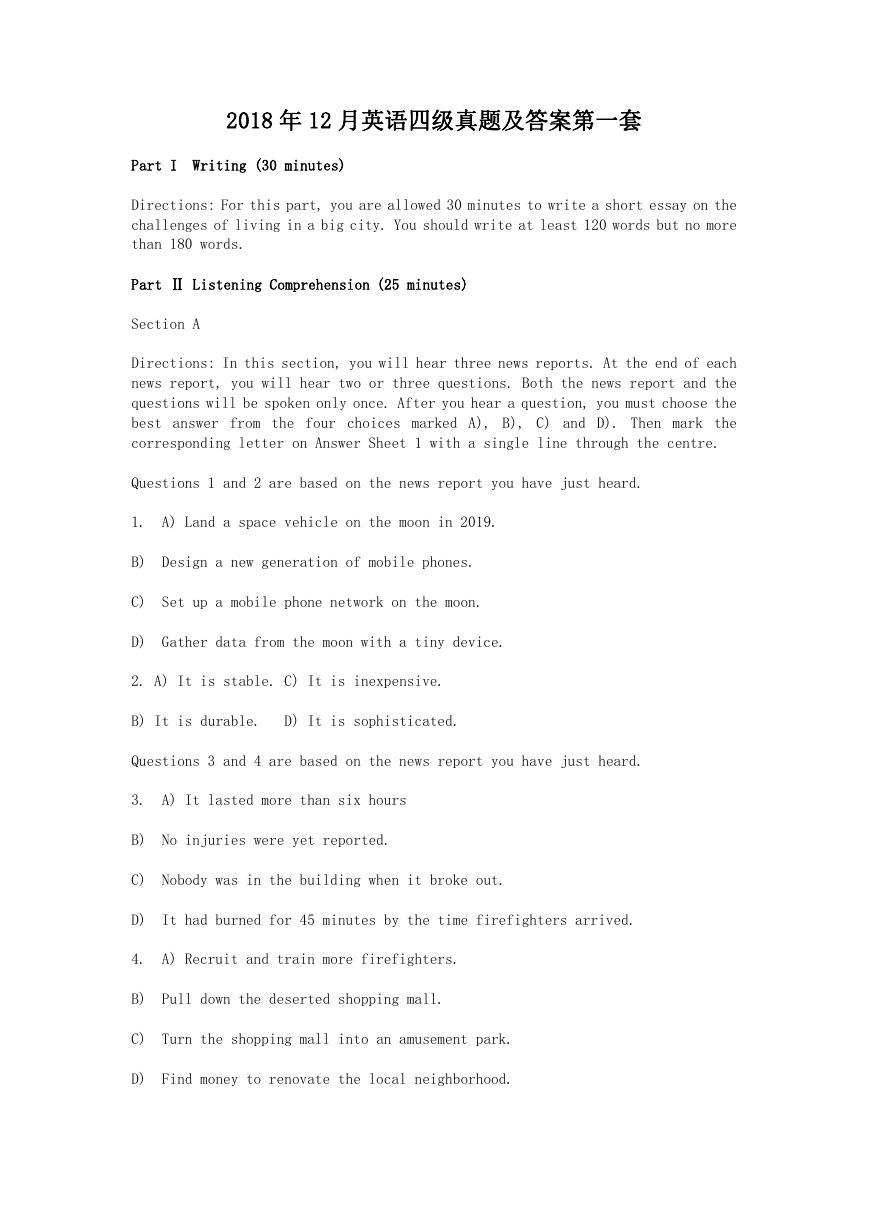















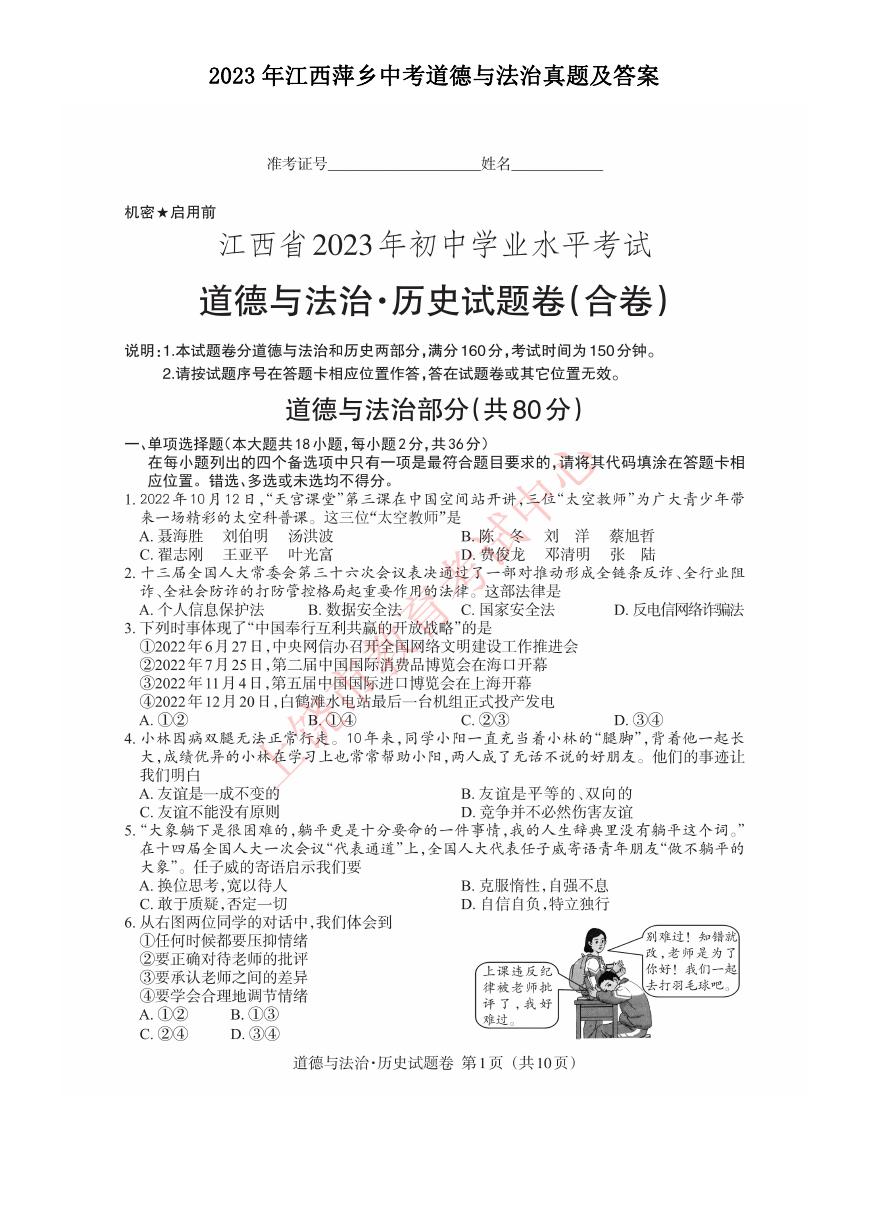 2023年江西萍乡中考道德与法治真题及答案.doc
2023年江西萍乡中考道德与法治真题及答案.doc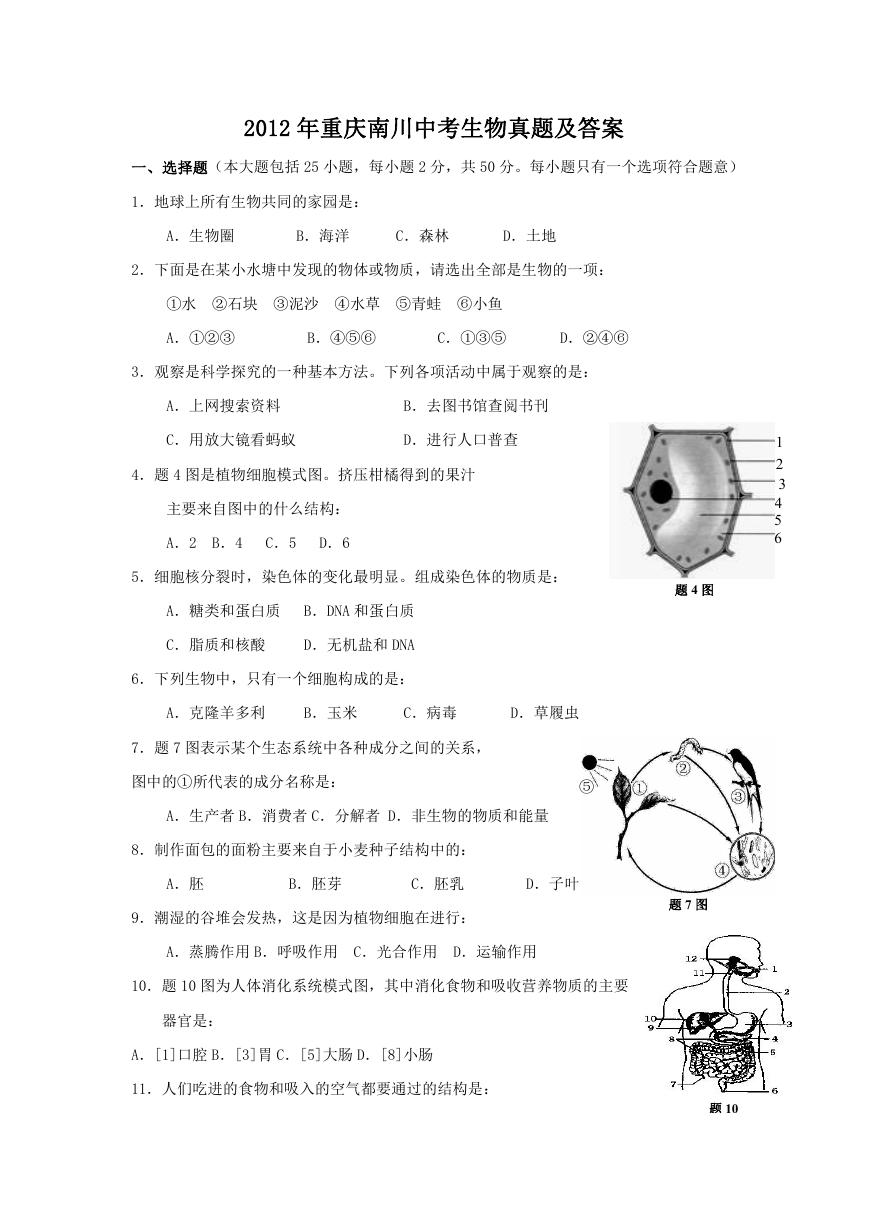 2012年重庆南川中考生物真题及答案.doc
2012年重庆南川中考生物真题及答案.doc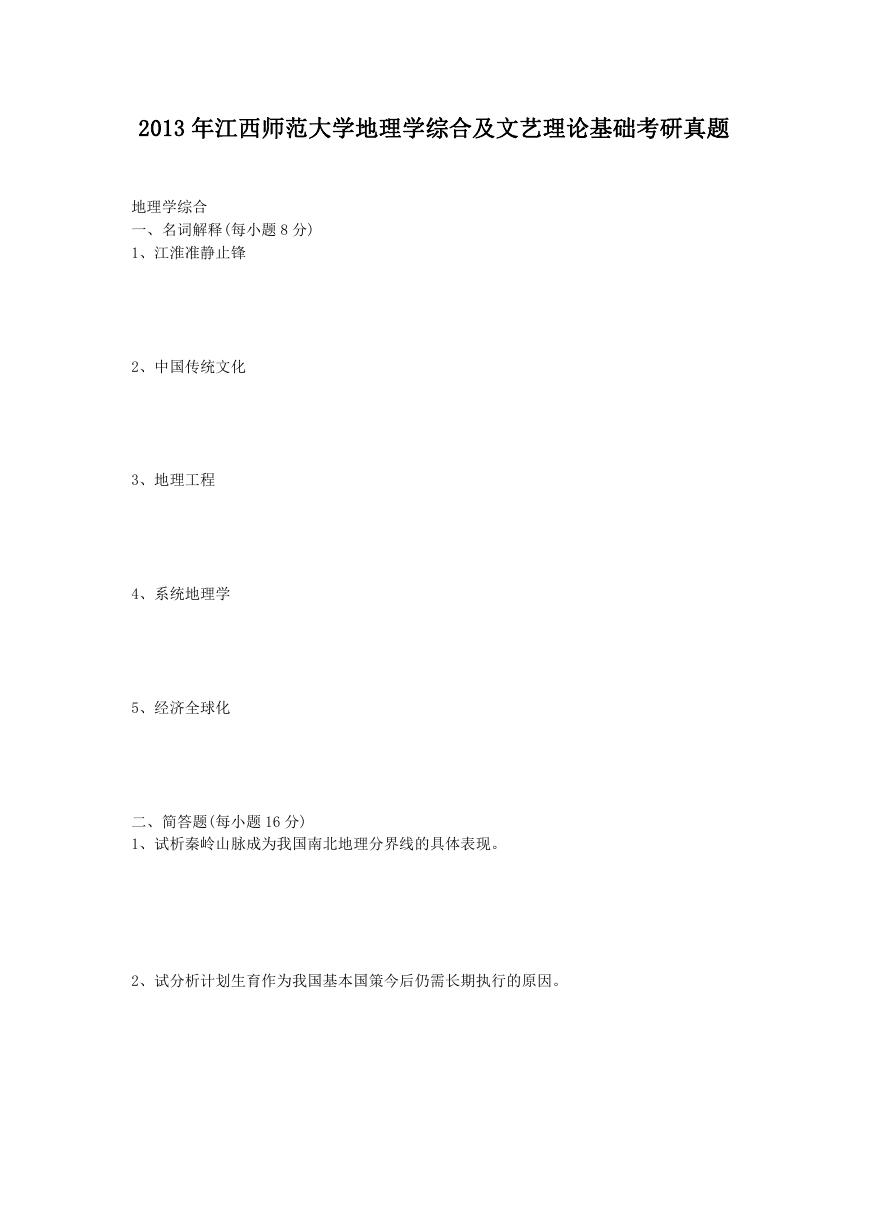 2013年江西师范大学地理学综合及文艺理论基础考研真题.doc
2013年江西师范大学地理学综合及文艺理论基础考研真题.doc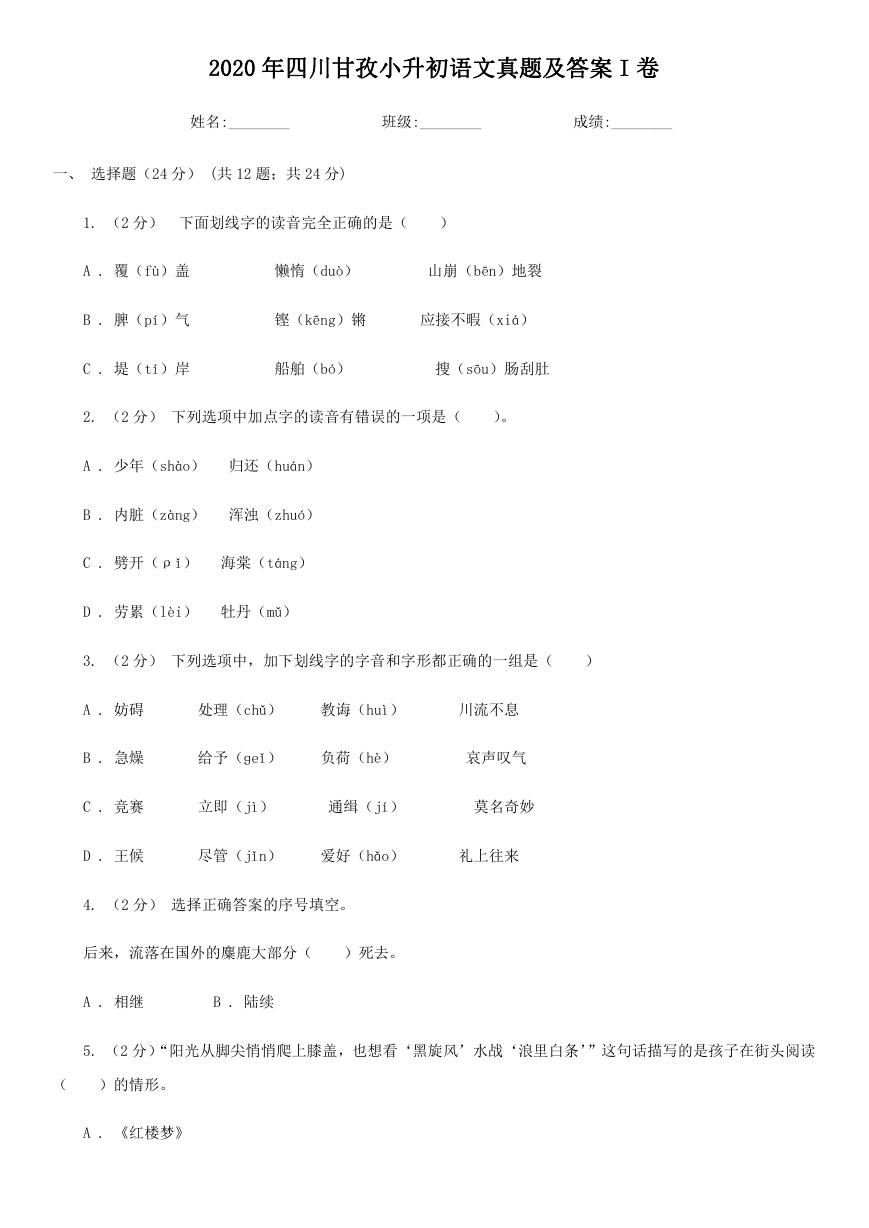 2020年四川甘孜小升初语文真题及答案I卷.doc
2020年四川甘孜小升初语文真题及答案I卷.doc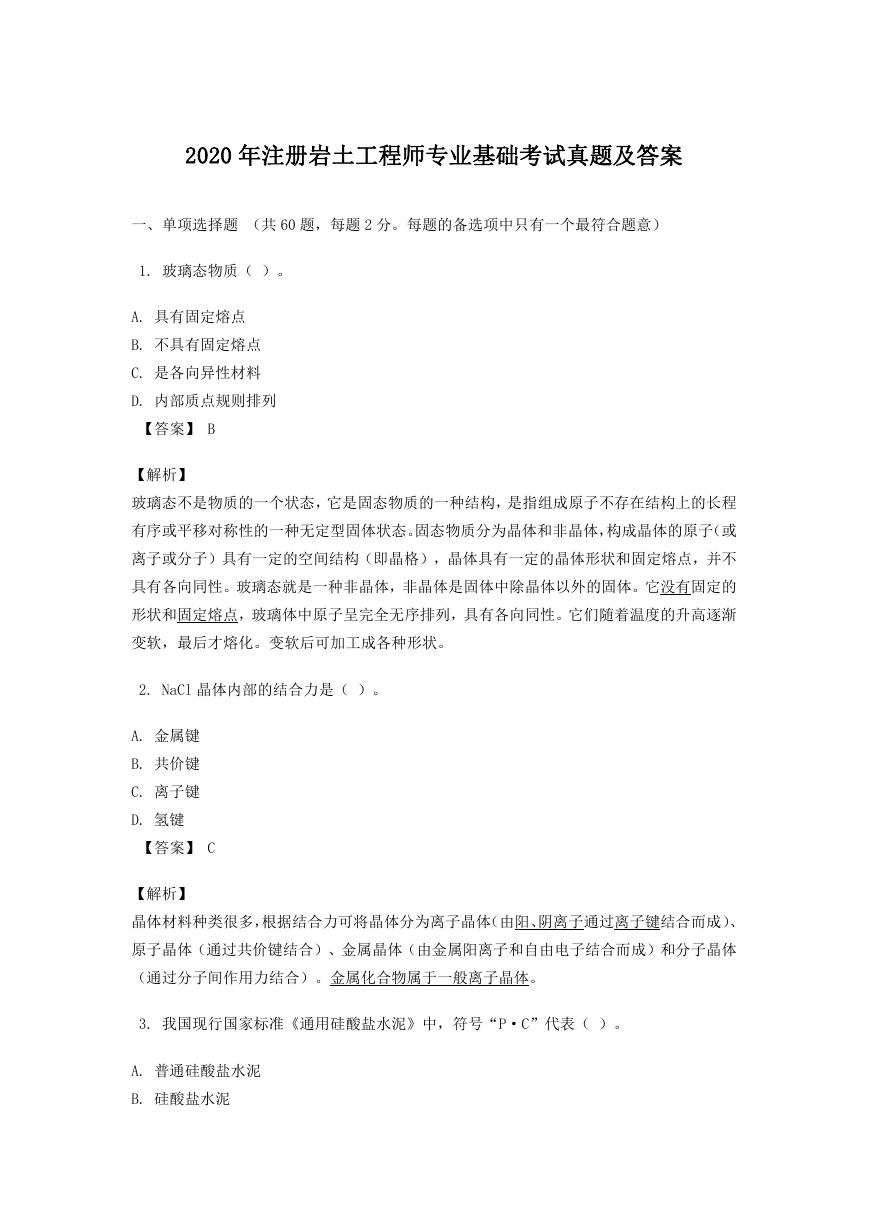 2020年注册岩土工程师专业基础考试真题及答案.doc
2020年注册岩土工程师专业基础考试真题及答案.doc 2023-2024学年福建省厦门市九年级上学期数学月考试题及答案.doc
2023-2024学年福建省厦门市九年级上学期数学月考试题及答案.doc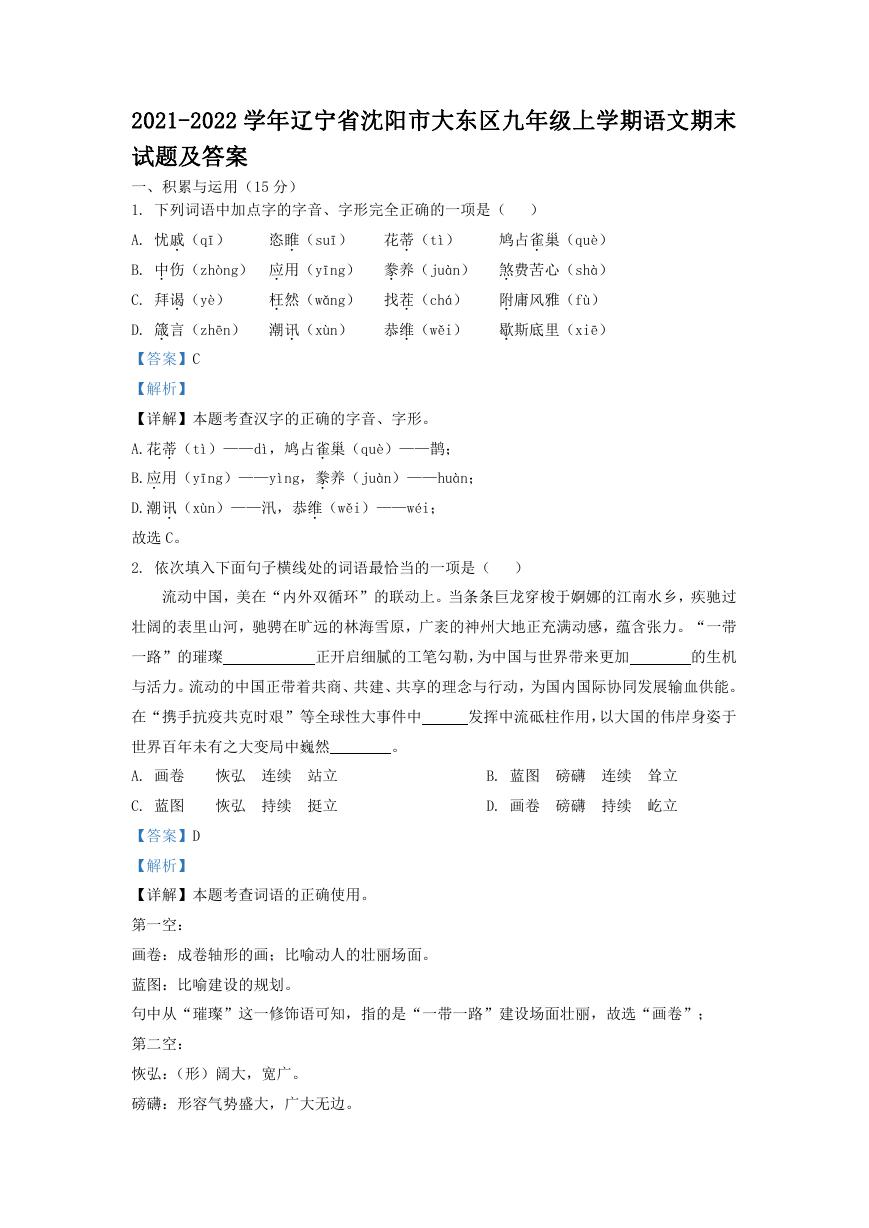 2021-2022学年辽宁省沈阳市大东区九年级上学期语文期末试题及答案.doc
2021-2022学年辽宁省沈阳市大东区九年级上学期语文期末试题及答案.doc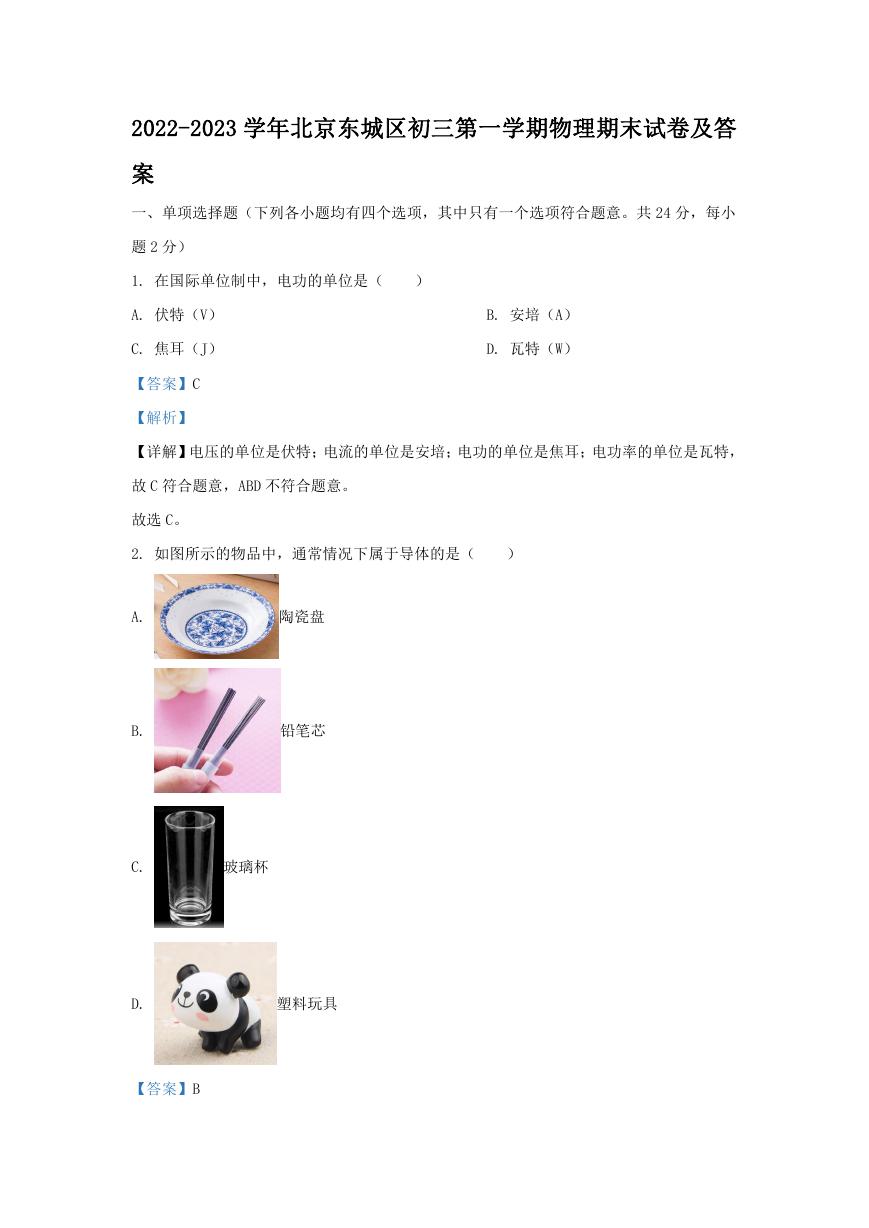 2022-2023学年北京东城区初三第一学期物理期末试卷及答案.doc
2022-2023学年北京东城区初三第一学期物理期末试卷及答案.doc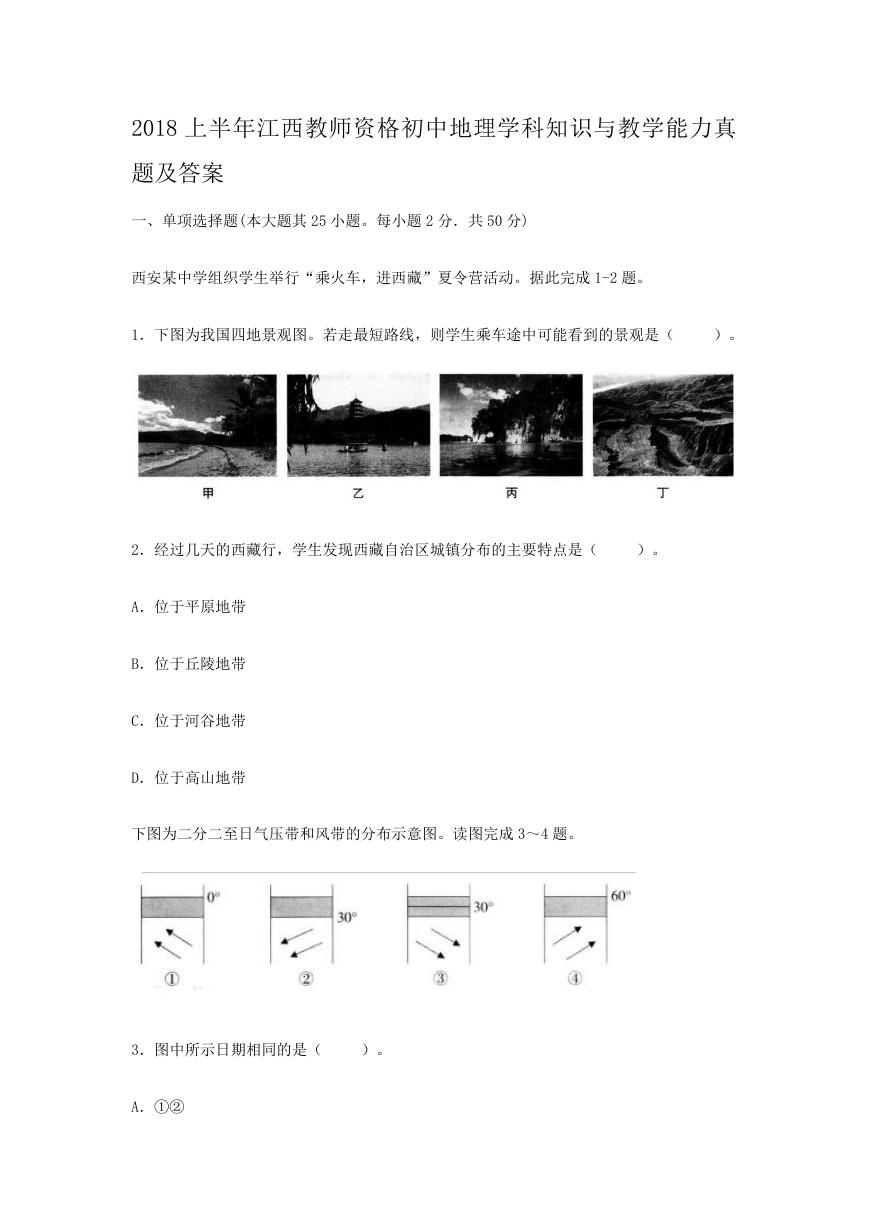 2018上半年江西教师资格初中地理学科知识与教学能力真题及答案.doc
2018上半年江西教师资格初中地理学科知识与教学能力真题及答案.doc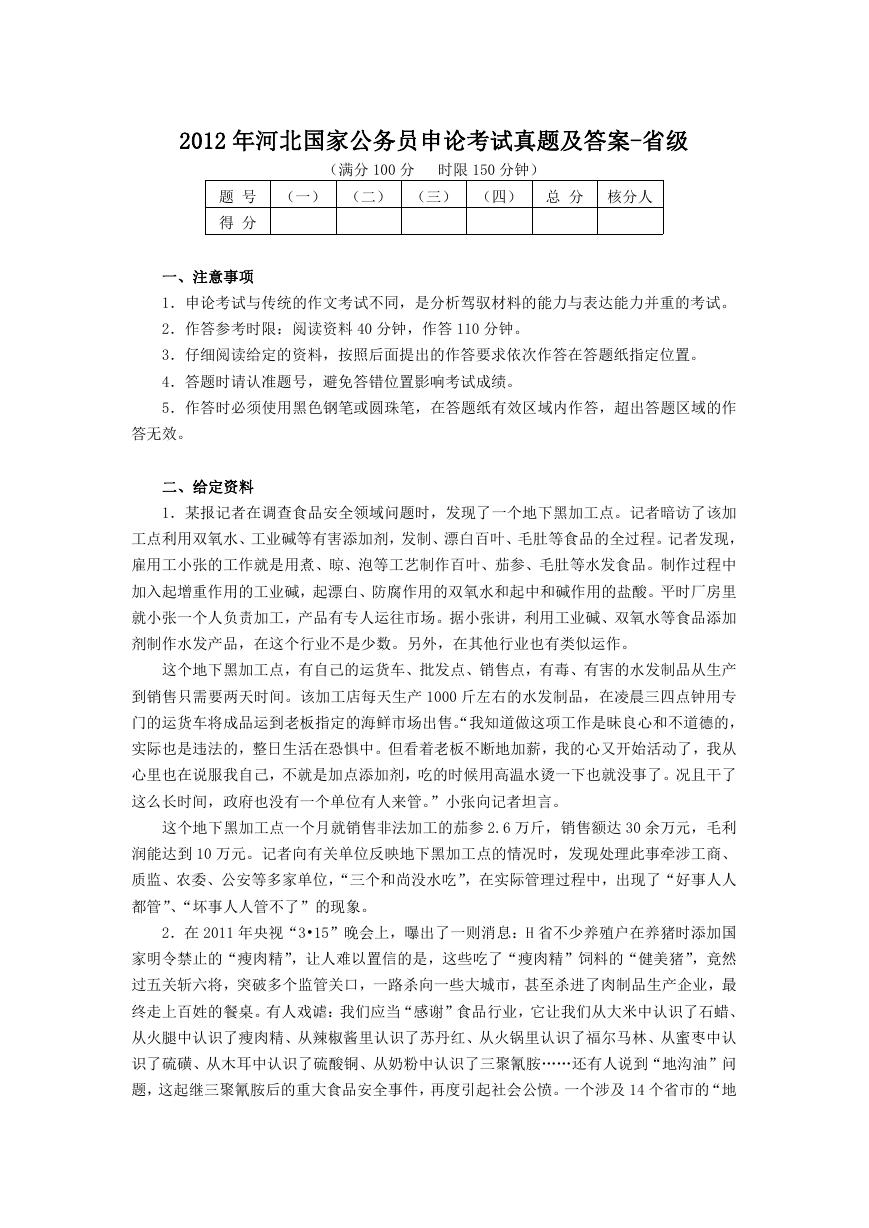 2012年河北国家公务员申论考试真题及答案-省级.doc
2012年河北国家公务员申论考试真题及答案-省级.doc 2020-2021学年江苏省扬州市江都区邵樊片九年级上学期数学第一次质量检测试题及答案.doc
2020-2021学年江苏省扬州市江都区邵樊片九年级上学期数学第一次质量检测试题及答案.doc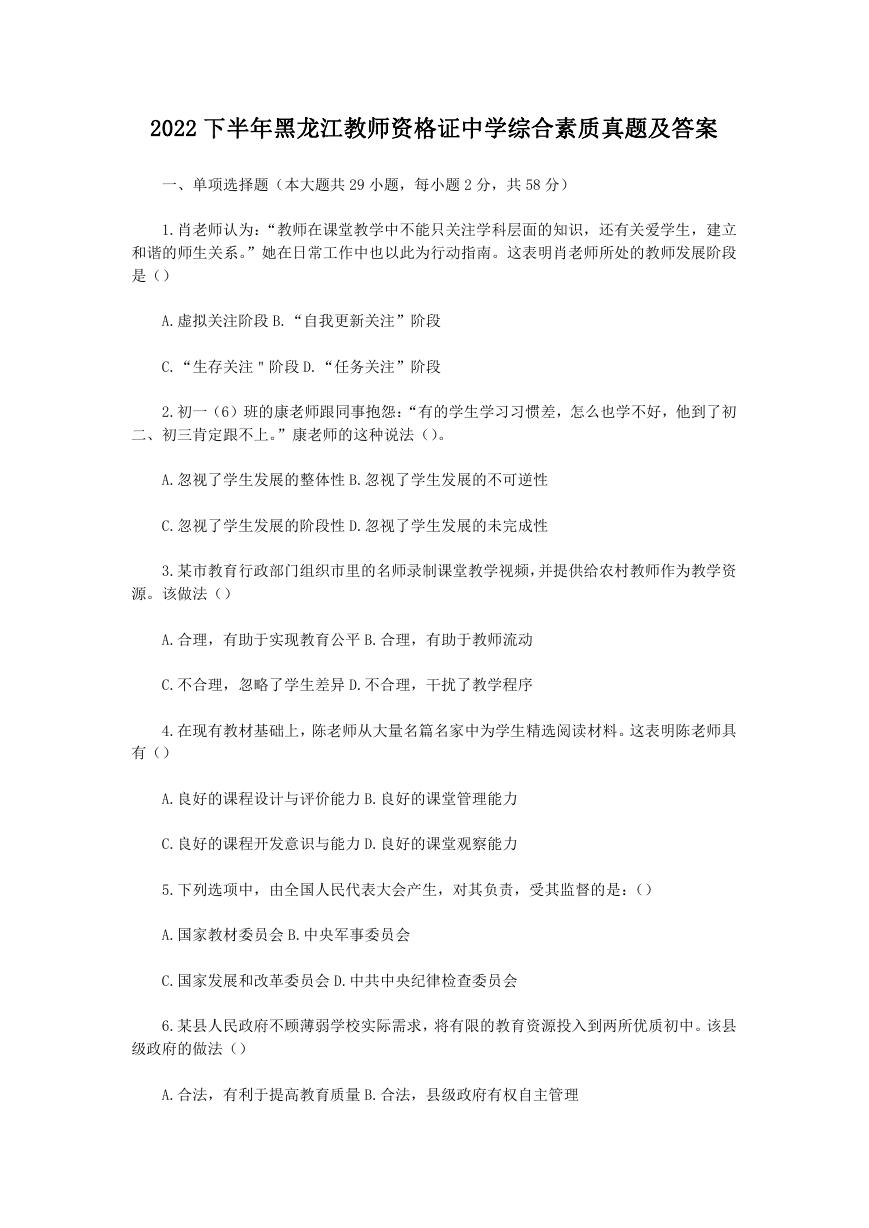 2022下半年黑龙江教师资格证中学综合素质真题及答案.doc
2022下半年黑龙江教师资格证中学综合素质真题及答案.doc